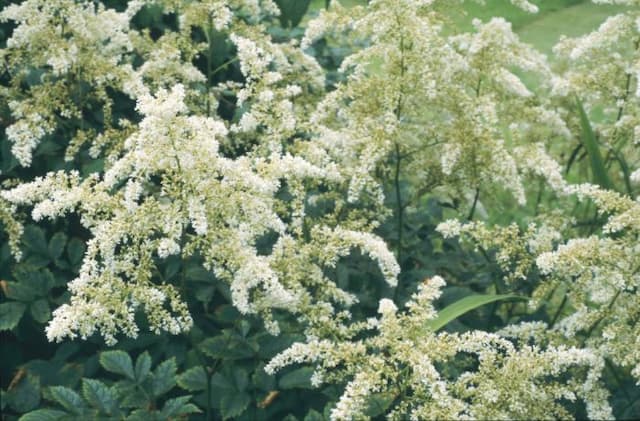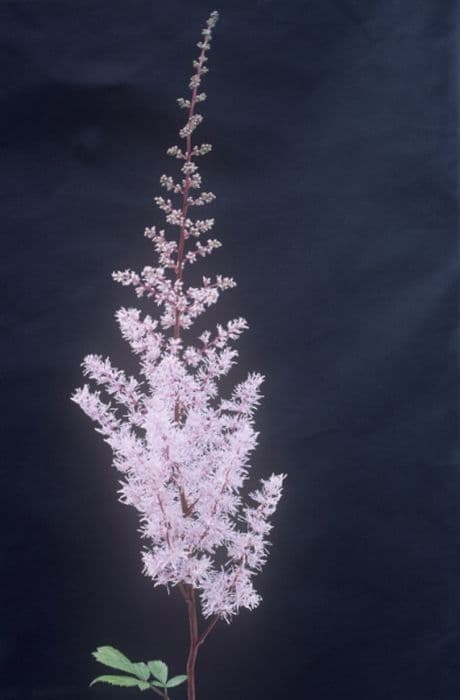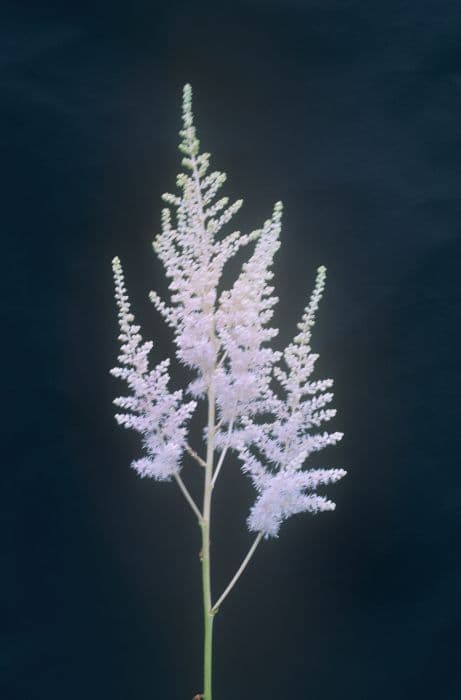Purple Saxifrage Saxifraga 'Theoden' (oppositifolia) (7)

ABOUT
Saxifraga 'Theoden,' commonly known as King's saxifrage, is characterized by its striking appearance. This cultivar has a mat-forming habit, which means it spreads out as it grows, creating a dense carpet-like appearance. The foliage typically consists of small, rounded leaves that are often tightly packed together. These leaves are usually vibrant green in color and may have a fleshy texture, adapted to store water. As for the flowers, King's saxifrage produces blooms that are uniquely eye-catching. The flowers typically emerge on short stems and form clusters. Each individual flower of Saxifraga 'Theoden' tends to be star-shaped, with petals that are beautifully symmetrical. The petals usually come in a bold color, often shades of pink or red, and they contrast strikingly against the green foliage. The plant is adapted to tough conditions and often found in rocky, alpine-like environments. The overall impression of Saxifraga 'Theoden' is one of a hardy, yet ornamental, ground cover that adds a splash of vibrant color to the landscape during its blooming period. The evergreen nature of this plant can also provide year-round interest even when the plant is not in flower.
About this plant
 Names
NamesSynonyms
Purple Mountain Saxifrage, Purple Saxifrage, Red Saxifrage, Alpine Saxifrage, Rockfoil
Common names
Saxifraga oppositifolia
 Toxicity
ToxicityTo humans
The Saxifraga 'Theoden', commonly known as Purple Mountain Saxifrage, is not commonly known to be toxic to humans. There is no widespread documentation of toxic effects from ingesting this plant. However, it's always prudent to exercise caution and avoid consuming parts of ornamental plants as they are not intended for human consumption.
To pets
Purple Mountain Saxifrage is similarly not documented as being toxic to pets. Still, caution is advised since the digestive systems of animals can react differently to plants compared to humans, and what is safe for humans may not be safe for pets. If a pet ingests this plant and shows any sign of illness, contacting a veterinarian is recommended.
 Characteristics
CharacteristicsLife cycle
Perennials
Foliage type
Evergreen
Color of leaves
Green
Flower color
Pink
Height
0.1 feet (3 cm)
Spread
0.5 feet (15 cm)
Plant type
Herb
Hardiness zones
3
Native area
Europe
Benefits
 General Benefits
General Benefits- Low Maintenance: Saxifraga 'Theoden' requires minimal care once established, making it a good choice for beginners or those with a low-maintenance gardening approach.
- Ground Cover: Its mat-forming habit makes it effective for covering bare spots in the garden, reducing erosion and suppressing weeds.
- Rock Gardens: This plant is especially suitable for rock gardens due to its ability to thrive in rocky, well-drained soil and its compact growth habit.
- Attracts Pollinators: The flowers of Saxifraga 'Theoden' can attract bees, butterflies, and other beneficial insects, promoting a healthy garden ecosystem.
- Ornamental Value: With its attractive foliage and vibrant pink flowers, this plant adds aesthetic appeal to gardens and landscapes.
- Seasonal Interest: It provides early spring blooms, offering a welcome burst of color after the winter months.
- Tolerance to Cold: Saxifraga 'Theoden' is hardy in many climates, capable of withstanding cold temperatures and frost conditions.
 Medical Properties
Medical Properties Air-purifying Qualities
Air-purifying QualitiesThis plant is not specifically known for air purifying qualities.
 Other Uses
Other Uses- Saxifraga oppositifolia can serve as a natural ground cover in rock gardens due to its low-growing, spreading habit which helps in suppressing the growth of weeds.
- When planted in crevices or between paving stones, Saxifraga oppositifolia can help stabilize stones and reduce erosion through its root system.
- The plant's ability to thrive in cold environments makes it an ideal candidate for use in refrigerator roof gardens, which helps in insulating buildings in cold climates.
- Saxifraga oppositifolia may be used in outdoor education settings to teach plant adaptation and survival strategies in alpine environments.
- Its dense mat-forming characteristic can be exploited to create living outdoor artwork, such as garden mosaics or "green" graffiti.
- During flowering season, Saxifraga oppositifolia attracts pollinators which can be beneficial for the ecological balance of a garden.
- Its eye-catching purple flowers can be used as a photography subject to highlight the diversity of mountain flora or in macro-photography workshops.
- Cultivated varieties of Saxifraga oppositifolia could potentially be used in plant breeding programs to create new garden cultivars with unique characteristics.
- Its contrasting foliage against rocky terrains provides excellent background for miniature garden scenes or model train landscapes.
- When drying the flowers, Saxifraga oppositifolia can be used in creating botanical prints or herbarium specimens for educational purposes.
Interesting Facts
 Feng Shui
Feng ShuiPurple saxifrage is not used in Feng Shui practice.
 Zodiac Sign Compitability
Zodiac Sign CompitabilityPurple saxifrage is not used in astrology practice.
 Plant Symbolism
Plant Symbolism- Persistence - Saxifraga, also known as 'Breakstone', exemplifies persistence due to its ability to split rocks as it grows in its natural alpine environments, seeming to overcome the impossible.
- Sturdiness - The plant's ability to thrive in high mountain areas with harsh conditions symbolizes sturdiness and resilience.
- Timelessness - Saxifraga species often grow in ancient, unchanging landscapes, representing the concept of permanence and timelessness.
- Adaptability - Its capability to adapt to extreme environments symbolizes the ability to flourish under any circumstances.
 Water
WaterPurple Mountain Saxifrage, also known as Saxifraga oppositifolia, should be watered moderately to maintain a moist soil environment without causing sogginess. It is necessary to provide approximately 1/4 gallon of water per plant, once or twice a week during active growth in the spring and summer. In cooler seasons, reduce watering to every two weeks, ensuring that the soil surface is dry to touch between waterings. During hotter, drier periods, increase watering frequency, making sure to soak the soil thoroughly to encourage deep root development.
 Light
LightPurple Mountain Saxifrage prefers bright, indirect light or partial shade. It is best situated in a spot where it can avoid the intense heat of the midday sun. A location that receives morning sunlight and afternoon shade, or filtered light throughout the day, is ideal for this plant to thrive.
 Temperature
TemperaturePurple Mountain Saxifrage can withstand cool temperatures and should be grown in conditions between 32 and 70 degrees Fahrenheit. It is a hardy alpine plant, with a survival range down to about 0 degrees Fahrenheit, but it thrives when the temperature is consistently cool. Avoid exposure to prolonged temperatures above 70 degrees Fahrenheit, as it may stress the plant.
 Pruning
PruningPurple Mountain Saxifrage requires minimal pruning, primarily to remove any dead or damaged foliage and to maintain its compact growth habit. Pruning should be done in the early spring or immediately after the flowering period to allow for rejuvenation and to encourage a flush of new growth. Once or twice a year is typically sufficient for this low-maintenance plant.
 Cleaning
CleaningAs needed
 Soil
SoilPurple Mountain Saxifrage prefers a well-draining, gritty soil mix with a slightly acidic to neutral pH range of 5.5 to 7.0. A combination of coarse sand, peat, and perlite or pumice is ideal to ensure appropriate drainage and aeration.
 Repotting
RepottingPurple Mountain Saxifrage seldom requires repotting; it can typically be done every 2 to 3 years or when the plant outgrows its container, whichever is less frequent.
 Humidity & Misting
Humidity & MistingPurple Mountain Saxifrage thrives in moderate humidity levels but is quite adaptable and can tolerate both drier and more humid conditions as long as adequate ventilation is provided.
 Suitable locations
Suitable locationsIndoor
Provide bright indirect light and ensure good air circulation.
Outdoor
Plant in well-draining gritty soil; full sun to partial shade.
Hardiness zone
4-9 USDA
 Life cycle
Life cycleSaxifraga oppositifolia, commonly known as Purple Saxifrage, begins its life as a seed, which germinates in late spring when soil temperatures rise. Upon germination, the seedling develops a small root system and a rosette of leaves close to the ground, adapted to its often cold and rocky habitats. As a perennial, the plant enters a vegetative state where it focuses on growth and resource accumulation through photosynthesis during the short alpine summer. The following spring, it enters the reproductive stage, producing characteristic purple flowers that attract pollinators, ensuring cross-pollination. After pollination, seeds are formed and dispersed by wind or water, and the plant senesces in winter, though it remains alive, ready to regrow from its base the next season. Throughout its life, Saxifraga oppositifolia may also propagate asexually through offsets, extending its presence in its growing area.
 Propogation
PropogationPropogation time
Spring to Summer
The popular method for propagating Saxifraga 'Theoden', commonly known as Purple Mountain Saxifrage or Purple Saxifrage, is through division. This should ideally be done in the spring as the plants begin to grow. You can gently separate the plant clumps into smaller sections, ensuring that each new division has several growing points and a healthy root system. The divisions are then planted into well-draining soil at the same depth they were previously growing. It is important to water them adequately after planting to help establish the new divisions. Within a few weeks to a couple of months, these new plants will establish themselves and start to grow, given the right conditions of cool temperatures and moisture.









